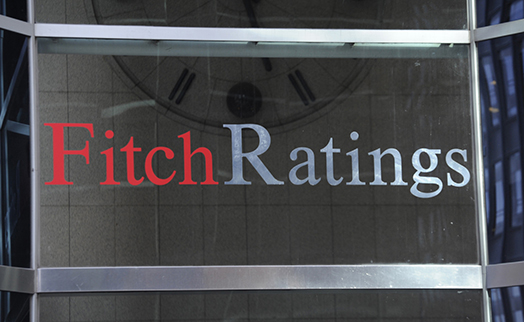18.06.2021 23:16

YEREVAN, June 18, /ARKA/. Fitch Ratings has affirmed the Armenia's ACBA BANK Open Joint-Stock Company's (ACBA) Long-Term Issuer Default Rating (IDR) at 'B+' with a Negative Outlook. A full list of rating actions is at the end of this commentary.
ACBA's IDR and senior debt rating are driven by the bank's intrinsic strength, as captured in its Viability Rating (VR) of 'b+'. The VR is significantly influenced by Fitch's assessment of the potentially cyclical operating environment in Armenia and resulting credit risks from the highly-dollarised and concentrated local economy. The Negative Outlook on the Long-Term IDR reflects Fitch's view of residual downside risks to the bank's credit profile due to the lag effect from the economic downturn, keeping asset quality and solvency metrics under pressure in the near term.
The Armenian economy has been significantly affected by the coronavirus pandemic and the military conflict between Armenia and Azerbaijan in late 2020, leading to a real GDP contraction of 7.6% in 2020 (vs. the 'B' median contraction of 4.2%). Fitch expects the economy to recover moderately by 3.2% in 2021 and 4.0% in 2022, which should support banks' prospects for credit growth and revenue generation. At the same time, we believe that the full extent of downturn has not yet been reflected in banks' asset quality metrics in 2020-1Q21 and problem loan recognition will continue in 2021 and potentially in 2022. Some risk aversion and continuing business uncertainty still weigh on growth appetite, further constraining potential for near-term profitability improvements.
ACBA mainly takes credit risk from its loan book, which accounted for 66% of total assets at end-2020. The share of impaired loans (Stage 3 plus purchased or originated credit impaired) remained moderate at 5% of gross loans at end-2020 (2019: 3.4%), after write-offs and modest lending growth. Total loan loss allowance (LLA) coverage of impaired loans was a reasonable 76% at end-2020. Furthermore, Stage 2 exposures were equal to 8% of loans at end-2020, representing moderate additional risks for the asset quality metrics, and were by 8% covered by specific LLAs.
ACBA's exposure to the agricultural sector (31% of loans) softened the pandemic's impact on the bank's financial metrics due the relative stability of the segment in 2020. The bank's exposure to more vulnerable tourism and hospitality sectors is insignificant. Single-name concentrations are low, reflecting the bank's primary retail lending focus, and relatively low dollarisation of the loan book (end-1Q21: 27% at ACBA vs the sector average of 50%). However, ACBA is significantly exposed to unsecured retail lending (25% of gross loans, or 125% of the bank's Fitch Core Capital, FCC), an area of heightened risk due to high unemployment and households' generally high indebtedness.
Low profitability is a relative weakness, with ACBA's operating profit to regulatory risk-weighted assets (RWAs) ratio at only 0.7% in 1Q21 (annualised; 2020: 0.9%; 2019: 2.5%). Core earnings remained stable, with the net interest margin averaging 7% for the last several years. However, its bottom line is affected by relatively high operating expenses 1Q21: 63% of gross revenues; 2020: 55%) and elevated loan impairment charges (1Q21: 2.7% of average loans, annualised; 2020: 3.2%: 2019: 0.5%). The return on average equity was a modest 4% in 2020-1Q21 (2019: 11%).
ACBA's FCC to regulatory RWAs ratio was an adequate 14.6% at end-1Q21. Net impaired loans (net of total LLAs) were a low 6% of FCC at end-2020, but downside risks to capital remain given asset quality vulnerabilities. ACBA's regulatory core capital ratio was tighter due to deductions in local accounts, standing at 11.8% at end-1Q21 vs. the minimum level of 9.0%.
ACBA is funded by a large customer deposit base constituting 66% of total liabilities at end-1Q21. A notable share of foreign funding is from international financial institutions, equal to 18% of total liabilities. Liquidity is relatively tight with a high loan-to-deposit ratio of 122%. We estimate that its liquid assets (cash and short-term interbank placements) net of short-term wholesale debt repayments could only withstand an outflow of a low 3% of customer accounts at end-1Q21. Additional liquidity sources include unpledged government securities of the Republic of Armenia (8% of total customer accounts). ACBA may also rely on refinancing maturing external debt. -0-
Read the news first and discuss them in our Telegram
Tags:































